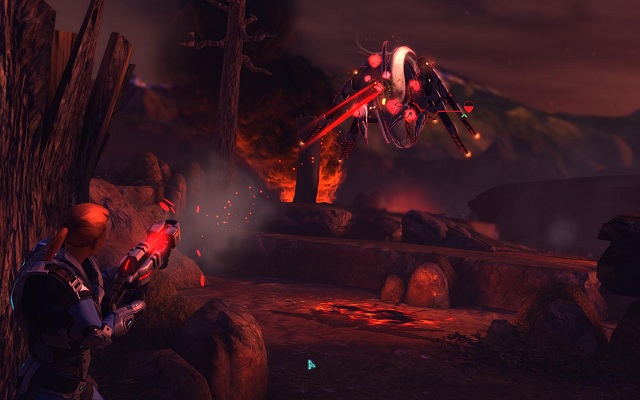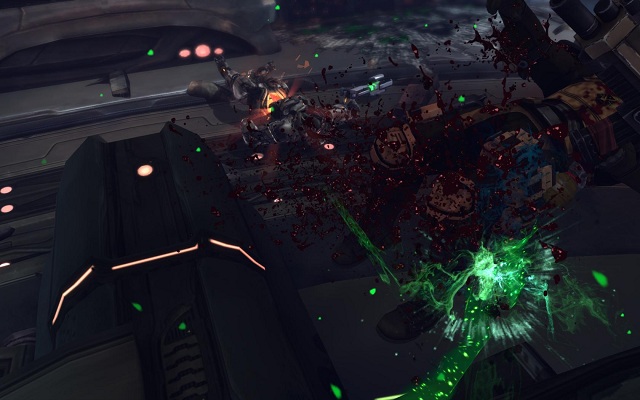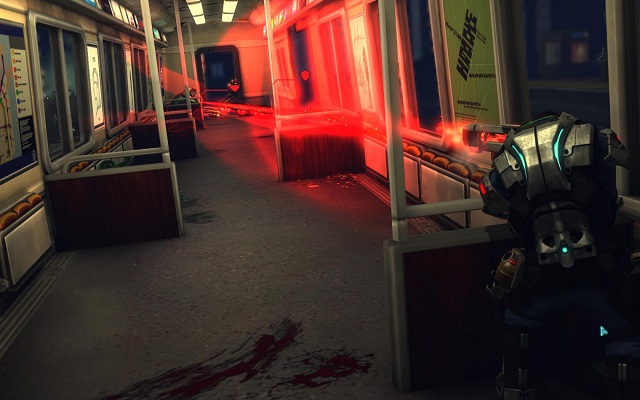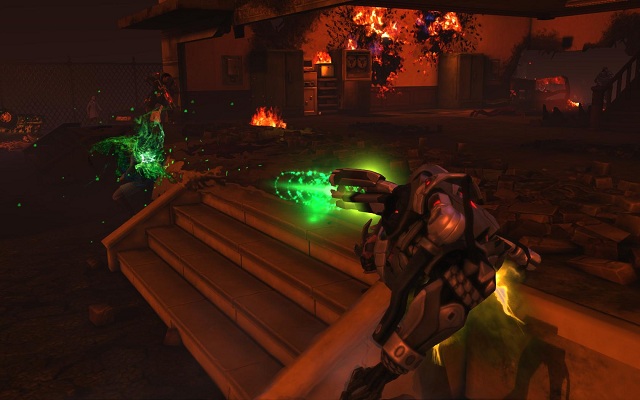The X-Com series is unlike anything you’ve ever played before. Like a matryoshka doll, these strategy titles are a game within a game. And then within these, you’ll find layers upon layers of complexity and depth. Sure, some games are like some parts of X-Com, and yet others are like different parts of X-Com. But nothing is quite like the whole shebang.
Codenamed X-Com, for Extraterrestrial Combat, the clandestine paramilitary organization needs a leader. Should you accept this mission, you’ll oversee operations at every juncture, from the large-scale strategic view of stopping an alien invasion of the entire planet down to the tactical level of turn-by-turn skirmishes of small squads fighting on the front lines. You’ll direct research, decide what equipment to manufacture, maintain an international coalition against the encroaching Martian threat, and build the facilities to make all of this possible.
While managing all of this, you need to please the nations of the world funding this international initiative. Fail too much and too often and countries slowly drop out of the program until you’re unable to continue. That’s a lot of pressure.
The original X-Com: UFO Defense came out almost 20 years ago. We haven’t seen anything remotely similar and worthwhile since series creators Julian and Nick Gollop finished their own follow up, X-Com: Apocalypse, in 1997. Tomorrow, Maryland developer Firaxis (built from remnants of publisher/developer Microprose, the company that handled the original games) picks up the reins with its reimagined (and alternatively titled) XCOM: Enemy Unknown, which releases for the PC, PlayStation 3, and Xbox 360.
WHAT YOU’LL LIKE
Enemy Unknown has a lot of character, including a deep appreciation for its source material and UFO mythology. Its design succeeds in ways that should give other developers cause to take notice.
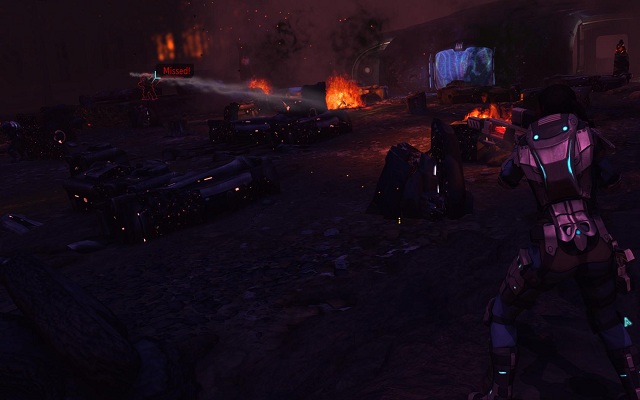
Is that your final decision, sir?
Enemy Unknown is all about making choices, and the outcomes are not always so obvious. This follows the ideas from game designer Keith Burgun (100 Rogues, Auro), who argues that decisions are not really decisions unless they are also “ambiguous.” In other words, if a particular problem has an obvious solution, you’re always going to pick that best option. You weren’t really given a choice.
You’ll make many of your decisions in Enemy Unknown during the turn-based, tactical portion of the game, where you’ll lead a squad of up to six individual soldiers against an unknown number of menacing alien scum.
Positioning your troops behind cover is vitally important to their survival. Because of fog of war (a mechanic that obscures parts of the map outside your units’ visible range), the choice is one you must sometimes make without complete information — you won’t always know the location of your enemies. If you happen to place a warrior on the wrong side of a tree, the enemy could flank him, which provides a significant combat bonus to the attacker. Making such bad calls can have serious, permanent consequences because when soldiers die, that’s it.
In the strategy component of Enemy Unknown, where everything plays out in real time, you have several different goals competing for the same resources. You’ll only receive so much funding per month from The Council, a collective of 16 nations that make the XCOM initiative possible, and you won’t be able to do everything you want all at once. Should you put money into developing new equipment for your squad, or would the XCOM organization be better off with an additional Satellite Uplink to increase its capability to monitor the skies?
These decisions have a permanence to them as well. The tactical combat portion of Enemy Unknown uses a two-action system, where soldiers can either move twice, move once and perform an action (such as shooting, using an item, or going into “Overwatch,” which is just a fancy term for reaction fire during the enemy’s turn), or perform a single action. Although a couple of skills let you bend the rules here, this is essentially how the system works. And this means that once you right-click a square on the grid-based map to order a unit to that location, you can’t take it back … even if you spot a previously unseen foe on the way there.
[vb_gallery id=546678]
In the strategy layer, you’ll routinely deal with reports of alien abductions from around the globe. These always come in groups of three, and you’ll only ever able to visit a single site. No matter what happens on the mission you choose, the rest will negatively affect XCOM’s performance rating for those nations that you decide to ignore. And sometimes, though not too often, your satellites might spot a UFO in the skies while you’re readying your strike team.
Enemy Unknown goes further and employs Ironman Mode, which autosaves the game every turn in a single slot. Playing in this fashion makes all of your decisions especially meaningful because you can’t engage in save scumming — as Burgun wrote in his article, “If you can reload after making a bad choice, then that choice gets no chance to have effects on the game.” Unfortunately, playing Ironman is only an option, and I wish Firaxis had had the fortitude to go all the way, like developer From Software has done with the Souls games.
But like the original, Enemy Unknown gives all your decisions the necessary context to make them meaningful. Firaxis calls it The Council.
“We’ll be watching you”
That would be The Council, who will sinisterly relay this message from time to time, and the judgment of this international body ties together everything else in your charge. At the end of each month, they score your performance, noting the number of alien abductions, UFOs shot down or raided, research projects completed, or any other mission-critical milestones. Your successes and failures ultimately decide whether they’ll keep the cash flowing.
Each country has a panic rating, and if any reach red on the scale, you’ll have until the end of the month to calm everyone down. That could mean launching a satellite over a nation’s airspace, recovering a crashed UFO in the region, or completing a Council-mandated mission.
Failing to satisfy these nations means that they’ll withdraw from the XCOM project all together, which then results in you losing out on bonuses earned by providing full satellite coverage for an entire continent, such as Asia’s “Future Combat” that drops the cost of projects in the Foundry and upgrades in the Officer Training School by 50 percent. Lose half of The Council and it’s game over.
Without this, you’d have no incentive to consistently perform well. The Council makes every engagement feel dire and lends urgency to every decision.
WHAT YOU WON’T LIKE
Bringing the original X-Com into this modern era of game design obviously necessitates some tweaks. Unfortunately, Firaxis’ efforts may have gone a little too far in a few places.
Tactical missions feel more “gamey” and less stimulated
Everything starts out fine. Your squad awaits your command. But as you jump from cover to cover searching for aliens, the game might treat you to a sort of “sound wave” clearly pointing in a particular direction. Your soldier might interject, “Shh! Did you hear that? I don’t think we’re alone.”
Enemy Unknown wants you to think that you’re hearing enemies moving outside your soldiers’ vision and getting ready to strike at your position. Unfortunately, the curtain comes down as soon as you encounter them.
Aliens run in packs of two or three, and you’ll soon realize this because you’ll often see a group of just this size sitting in a circle as if it’s waiting for you to show up. You’ll get a cinematic reveal of your foes … and then they all get a free move to cover during your turn! What the hell, Firaxis? (Although you can exploit this to your advantage because while they can move during your turn, soldiers in Overwatch can take reaction shots during your own turn. Yes, it’s as odd as it sounds.)
Every time I come across a pack of Martians in this fashion, the immersion immediately breaks. The sound wave is not the detection of aliens scratching around in the dark at all. It’s the game telling me exactly which direction to travel to reach my opponents. Ugh.
Contrast this to Silent Storm, another turn-based squad-level tactics game, which employs a real stimulated sound system. It would even place silhouettes of enemies in suspected locations based on what your own troops had heard. The sound wave in Enemy Unknown has the benefit of solving the hidden last alien problem; however, Firaxis has left the cat-and-mouse hunt of the older games in the series behind in favor of a straight-up firefight.
Handcrafted maps
Firaxis assured everyone in the weeks and months before the Enemy Unknown releases that players wouldn’t see the same map in two separate playthroughs. I’ve been down this road before with another X-Com spiritual successor, UFO: Extraterrestrials. Developer Chaos Concepts claimed the same thing regarding its decision to ditch procedurally generated terrain.
Chaos Concepts was blowing smoke then, and Firaxis is blowing smoke now. You will see the same battlefields all the time in a single campaign.
And yes, I understand that enemy spawn locations will change or that my squad might start at a different edge of the tactical space (although they almost always come off the Skyranger dropship in the same location). That doesn’t matter. It’s still the same map. It’s the same office building with the same cars parked in the same places outside the same front door.
This absolutely affects replayability. Seeing the same maps over and over can really zap your will to continue forward. Randomized locations keep you on your toes and offer enough variety to make every encounter feel 100 percent unique. Enemy Unknown needs something like this purely because you’re going to fight a lot of these missions in a single campaign. Such variety keeps everything feeling fresh.
Limited destructive capabilities
Thankfully, fully destructible terrain is in; unfortunately, Enemy Unknown doesn’t make use of a fully simulated physics system. Sure, the original X-Com didn’t, either, but that was two decades ago. And the followup, Apocalypse, did implement such functionality, which led to all kinds of tactically interesting scenarios. Aliens in a top-level building window giving you trouble? Let’s see how they survive the fall once you destroy the support pillars and bring the whole structure down!
Even more disappointing, though, is that only a handful of weapons allow you to freely aim at anything on the map: explosives like grenades and rockets. Everything else requires a specific extraterrestrial target to be visible first. This results is less overall mayhem during a mission as firefights devolve into trading shots from cover instead.
Certainly, limiting the destructive capabilities to a handful of single-use weapons and items makes that equipment more tactically important, but part of the joy of wreaking unfettered havoc on the landscape is lost in the process.
CONCLUSION
Enemy Unknown might have taken a few shortcuts, but these digressions are minor in comparison to what else it accomplishes as a game. The focus on meaningful, ambiguous decisions and then the determination to follow through with forced consequences is an achievement of design worthy of praise.
In no other game will you command an secret, international organization trying to stop a global alien invasion. In no other game will you direct research, manufacture the technologies you discover into useable equipment for your tactical squads in the field, and then lead those soldiers in battle. In no other game will the strategic choices you make intertwine so integrally with your tactical prowess. It’s a feedback loop between two seemingly disparate genres, and it works. The scope of Enemy Unknown is immense, both thematically and mechanically.
In these ways, Enemy Unknown is peerless in modern game design.
Score: 85/100
XCOM: Enemy Unknown releases Oct. 9 for PC, PlayStation 3, and Xbox 360. Publisher 2K Games provided GamesBeat with a Steam download code for the purpose of this review.
VentureBeat's mission is to be a digital town square for technical decision-makers to gain knowledge about transformative enterprise technology and transact. Learn More
